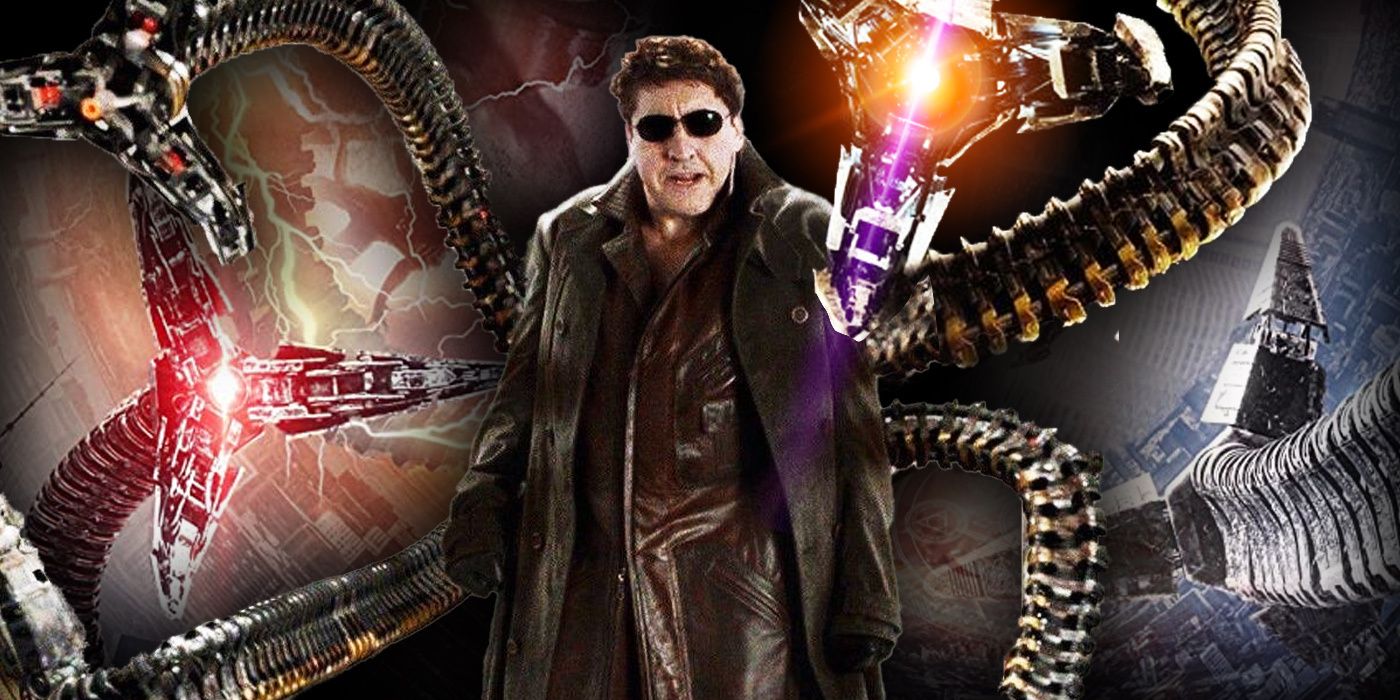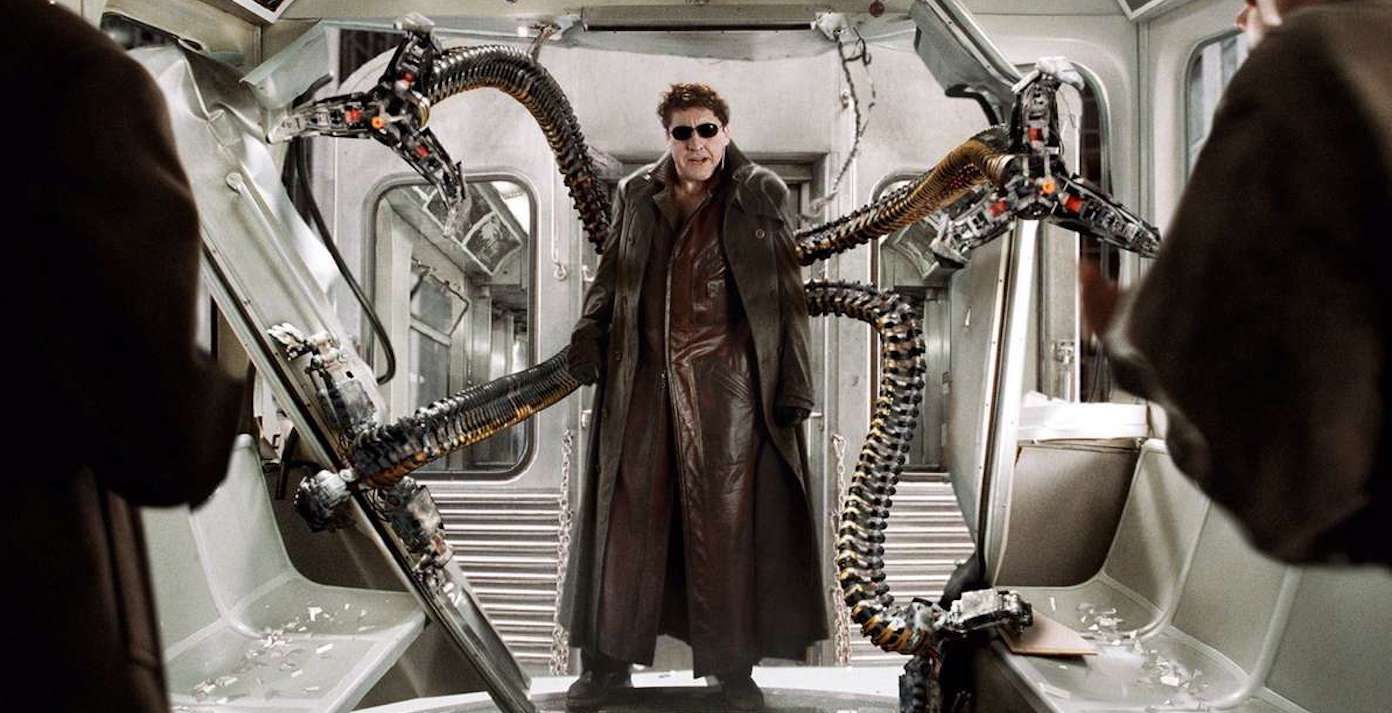When it comes to the Spider-Man universe, the second Sam Raimi feature remains highly regarded amongst fans and critics despite the numerous reboots and sequels that have followed the Tobey McGuire vehicle. To recall, the Spidey sequel focuses on Dr. Otto Octavius (Alfred Molina), whose wife is killed in a freak accident when his nuclear fusion experiment fails and explodes. During that fatal accident, Doc Ock's inhibitor chip is destroyed, and his highly intelligent metal arms feed into the doctor's darker side, which could potentially result in the destruction of an entire city if Spider-Man doesn't stop him.
Now, what makes the live-action Doc Ock so great is several key factors. The first is that he's treated like a human, not a monster. Once the inhibitor chip is damaged, it's clear that the metal arms are controlling him. The film doesn't simply make Doc Ock a generic villain trying to take over the world. Doc Ock has a desire to finish what he started, but the human side of him understands later on that his actions are wrong and immoral. That layered juxtaposition gives the villain dimension that's rare in the modern age of superhero films. However, what truly makes Doc Ock an incredible figure is the way Sam Raimi manages to incorporate horror elements into the Marvel villain.
Sam Raimi is no stranger to horror as the filmmaker is notable for his iconic Evil Dead series. Going back to Spider-Man 2, take the scene where the surgeons try to remove the metal arms; this scene was clever as it was a unique way to explain the shift in Doc Ock's character. The non-stop screaming from the surgeons represents terror, but also the lack of compassion and humanity these mysterious arms have is the key here. Not once do the metal arms feel any type of remorse or hesitation for the heinous and brutal murders of these innocent workers who are simply trying to just do their jobs.
It's like Jason Voorhees or Michael Myers. Neither of those horror icons show any sympathy or remorse for their murderous actions. Since there's no humanity or compassion within these highly intelligent arms it makes it easier to root for Spider-Man. It also creates an intriguing layer surrounding the metal arms. Exactly why do they care about Doc Ock finishing the nuclear fusion experiment? Are they feeding into his obsession and blocking out his remorse? Or is there an underlying agenda for their motives? Those questions are never answered, but it creates a mysterious cloud that keeps the narrative compelling and unpredictable.
The horror elements throughout the feature make Doc Ock feel like a major threat: him climbing the walls of Harry Osborn's (James Franco) home, to the reaction shots of the ground shaking, indicating that Doc Ock is near. That brings us to moments like Doc Ock threatening to kill Aunt May (Rosemary Harris) if Spider-Man doesn't help her. Since the metal arms have been established as a heartless entity it racks up the tension over the possibility that Aunt May ends up painting the pavement. Of course, it helps that Sam Raimi crafted a nice plot surrounding her character, as it's clear that Aunt May is down on her luck following the loss of her husband Ben.
However, this device isn't just used on Doc Ock, but Harry as well. This is actually for the climax of the film when Harry sees his father. It emphasizes the trauma and pain that the young Osborn is going through, while cementing what's to come for the next Spider-Man feature. It doesn't take away from any of the Doc Ock moments because the narrative is different in this scene. The point was to finally push Harry into the villain role in a scene that's both layered in emotion and character development.
Speaking of the climax, the battle isn't exactly Spider-Man vs. Doc Ock; it's Otto suppressing his inner demons and confronting the horrors of what he's doing. There isn't any horror ambience, nor is there even some epic final fight between the two entities. Like Harry Jr., it all comes down to character development as Otto isn't the murderous figure that his metal arms have possessed him to become. By scrapping the horror elements for this moment, it highlights Doc Ock's purity and makes his self-sacrifice both tragic and heroic. The Spider-Man 2 villain remains one of the best live-action adaptations because of how nuanced his character is in the feature. He's treated as a human, whereas the metal arms are showcased as the monster that forces Otto to become obsessed with rebuilding the nuclear device. The horror elements of Doc Ock's character help emphasize the juxtaposition between Otto and his intelligent arms, and gives him the necessary dimension that goes beyond the stereotypical superhero villain.


